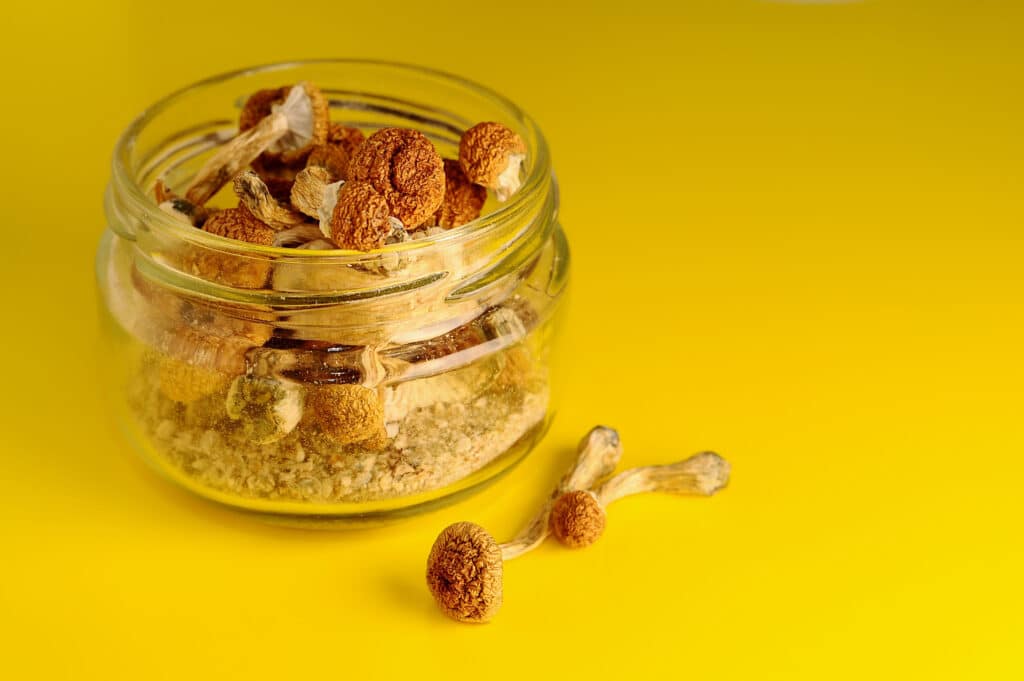Not all drugs are bought to use in one sitting. Here are some basic instructions for how to store your drugs properly, for optimal use.
There are a lot of different drugs out there, and each comes with its own best practices for storage. Today we’ll focus on a few main popular drugs, and how to store them properly; to get the most out of them through time.
How to store drugs: marijuana
What better way to start an article about how to store drugs, then with the most popular drug worldwide (aside from alcohol). Yup, I’m talking about marijuana. The first thing to know about marijuana storage, is that you want to avoid three basic things: light, heat, and humidity. It’s also good to keep the product in a location with consistent temperature, as frequent temperature/climate changes can ruin the potency of the plant.
The reason that light and heat are bad is because UV radiation and heat, decarboxylate and degrade cannabis compounds. If you leave it out in the sun too long, it’ll therefore lose potency. Too much humidity is an issue because of mold. If you let it get too moist around your grass, you’re likely to get moldy spots, and smoking mold is never a good thing to do. Mold can ruin an entire stash, or an entire series of production.
To deal with humidity issues, there are silica packets, similar to what you find in beef jerky, or a bottle of vitamins. These packets work to keep the humidity at specific levels, by absorbing excess moisture in the area, which stays in the silica in the packet. This ensures your weed doesn’t grow other plant life, that you’re not trying to grow. These are produced by several brands, and come in sizes to fit your particular stash.

Weed should never be stored in a refrigerator or freezer. Although having said this, freeze drying is an option, but more on an industrial level. This method involves harvesting plants, and cutting off all leaves, branches, and stems; but without further curing. The plant material is then put in freezer bags, and stuck in a freezer of about 38°F. It can be stored in this way indefinitely. If you can manage this in a home setup, you can keep your product fresh for a long period of time.
Regardless of where you put it, it should be in an airtight container. This keeps the weed fresh, while also ensuring that your house doesn’t smell like a weed farm. According to Food52, this should be done with as little room as possible between the weed, and the lid of the container. Glass jars are generally preferable.
The same article quotes other sources in talking about not using aluminum for long-term storage as it can affect the taste of the plant. On the other hand, titanium and metals used for food storage, are generally fine for storing weed.
How to store drugs: mushrooms
Mushroom storage is mainly based on when you think you’ll eat the mushrooms. These mushrooms, like mushrooms in general, can be stored in a refrigerator if they’re to be eaten in the near future. For magic mushrooms; this means up to about two weeks on average, at a temperature of 35-40° F; but bear in mind this could also mean just a few days. If in a refrigerator, they should be stored in paper, or perforated plastic.
For all other mushroom storage, drying them out is compulsory. Dried mushrooms last much longer, and drying is helpful for dosing; particularly microdosing, where only a portion of a standard dose is taken. Around 80% of a fresh mushroom is water; so drying them out means not accounting for water weight, when weighing out a dose.
There are different drying methods: dehydration, air-drying, and desiccation. These methods are generally done after an initial pre-drying session. This initial phase involves lying the mushrooms out on cardboard or towels, and letting them dry to a certain degree. When doing this part, the mushrooms should be put in a ventilated area, but should not be exposed to sunlight. They should be covered to stay in the dark, and only left like this for a few hours.

After this, they get fully dried. Air drying is possible, but only in climates of 55% humidity or less. It should take about two days. For this, its no different than the original pre-drying method. Just make sure to check on your mushrooms frequently to ensure you get them at the right level of drying: enough to snap when you bend them. And that they don’t get contaminated.
The other options involve more setup. Dehydrating involves a dehydrator; but comes with the benefit of even drying, and less issues of contamination. For this, the mushrooms go on a dehydrator sheet, and are heated to about 110°F. This should take 4-8 hours, so its much quicker than air drying. Whereas air drying can dry mushrooms inconsistently; a dehydrator does the job in a more consistent way.
Then there’s desiccation. This is similar to using silica gel packs, in that it involves something else absorbing the moisture. In this case, more moisture is absorbed, and its done with Epsom salts. The salt is baked itself for a couple hours, to melt it into a sheet. The sheet is broken up immediately, and put in an airtight container, along with the mushrooms. The container must separate the Epson from the mushrooms. This includes covering the Epson with paper towels, and utilizing some kind of metal mesh to keep them separated. The mushrooms should stay in here until they snap when bent.
Once dry, mushrooms can last for 1+ years without losing potency. But they must remain in an airtight container; and kept away from light, heat, and humidity. Glass is recommended, since plastic can let in air; and is therefore not an optimal option. For more tips on mushroom and spore storage, go here.
How to store drugs: LSD
When getting into how to store drugs; this pertains to plant drugs like marijuana and mushrooms; and synthetic drugs like LSD, or pharmaceutical pills. Just like plants, the latter group of drugs also requires specific storage conditions for maintaining potency for future use.
A study into LSD in urine, found that concentration was not lost when stored at 25°C for up to four weeks. However, when the temperature rose to 37°C, 30% of potency was lost. And at 45°, 40% was lost. LSD fortified urine didn’t lose potency under any light conditions tested, when stored in transparent containers. The LSD’s stability was connected to distance from a light source, wavelength of light, exposure time to light, and intensity of light.

It was also found that if LSD has prolonged exposure to hot temperatures in alkaline conditions, that 10-15% of the LSD will epimerize to iso-LSD. This happened less than 5% of the time in acidic conditions. This study is based on LSD in urine, but gives a good example of how heat, and light, affect LSD in general.
Of course, we don’t usually store LSD in urine. For storage of the compound, its best to take blotter paper or microdots and wrap them in tin foil. The tin foil should be sealed in something airtight, and put in a freezer, or another cold, dark place. For liquid preparations, they should already be in a glass bottle. The bottle should be wrapped in something protective, and stored in a refrigerator or freezer. These methods ensure that light, heat, and humidity will not cause the product to lose potency.
How to store drugs: pills
Another way we see drugs all the time now, is as pills. This relates to pharmaceuticals, as well as natural treatments. Pills are different in composition, and technically have different storage needs. But there are a few generalizations. Much like the other drugs listed, pills are affected by light, heat, and humidity. This is one reason that many countries use blister packs for nearly any pills, as this creates an automatic barrier to humidity; as well as a barrier to light since there is cardboard packaging around the blister packs.
In the US, OTC pharmaceuticals are often sold in blister packs, while prescription pharmaceuticals come in plastic bottles. These bottles can control humidity; but have less ability to stop light or heat (although most have some coloring). Sometimes pill bottles are colored to block light more; particularly the darker orange bottles. OTC medications that come in bottles, often include silica packs to absorb excess moisture in the air, and are generally in non-transparent plastic. Neither pill bottles nor blister packs can account for heat.
The best advice for pills is to store them in the packaging they came in. If that is not available, use an airtight bottle, preferably of dark glass or plastic. If necessary, add in a silica pack. Like everything else, its best to keep them in a cool, dry place, away from sunlight. If you’ve ever found a Tylenol laying out, or perhaps old allergy medicine out of the bottle; you might have noticed a flaky quality, or even downright mushiness. This can happen to pills when their environment isn’t well controlled. While physical stability is different from potency; a change in the former can relate to a change in the latter.
Conclusion
If you’re going to spend money on drugs, best to make sure you store them properly, to get the most out of them. I only covered a few popular drugs here. If you have questions about how to store other drugs not listed here; best to look up recommendations for that specific product, to ensure you get it right, and don’t lose potency. One basic that seems to run through nearly all classes of drugs, is to keep them away from light, heat, and humidity (or at least some of the above).
Thanks for joining in! Welcome to our news site, Cannadelics.com; where you can find independent reporting of the drugs world at large; with a focus on cannabis and psychedelics. Don’t be a stranger, come around frequently to keep up. And check out the Cannadelics Weekly Newsletter; for awesome product promotions, along with the news.







